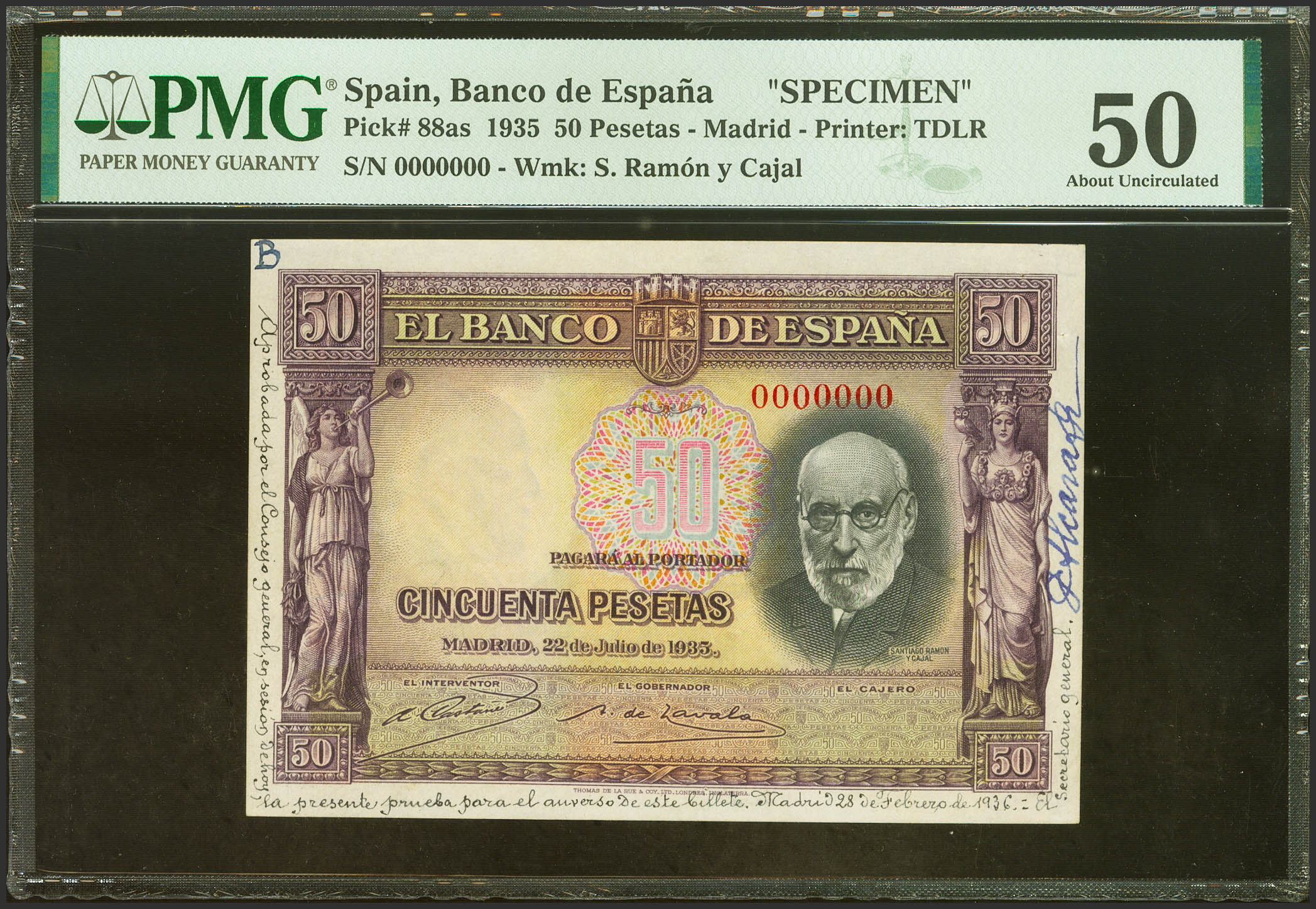41 | Spanish Banknotes












Automatically generated translation
 50 Pesetas. July 22, 1935. Without series, numbering 0,000,000, without cashier's signature, handwritten in the margins "Approved by the General Council, in today's session, the present proof for the obverse of this bill. Madrid, February 28 of 1936. The general secretary and signature of the cashier", specimens with annotations are very unusual. (Edifil 2021: 366M, Pick: 88as). Very rare. Extremely Fine. PMG50 encapsulation (printer's annotations, staple holes).
50 Pesetas. July 22, 1935. Without series, numbering 0,000,000, without cashier's signature, handwritten in the margins "Approved by the General Council, in today's session, the present proof for the obverse of this bill. Madrid, February 28 of 1936. The general secretary and signature of the cashier", specimens with annotations are very unusual. (Edifil 2021: 366M, Pick: 88as). Very rare. Extremely Fine. PMG50 encapsulation (printer's annotations, staple holes).
The process of designing a banknote begins with the signing of the contract between the bank and the printer. However, the turning point of the process is the presentation of different alternatives, usually colored (sometimes also with slight design changes), to the client. At that point, the bank makes the decision as to which front and which back should be final and the printer has the formal approval to ink the plates, load the paper and start the machines. These color tests are identified (at that time by letters in those of Bradbury or letters and numbers in those of Thomas de la Rue), in order to be able to refer univocally to each one.
The approval by the Board of the Bank of Spain was reflected in a text on the accepted copy(s). This text was normally limited to mentioning the word “approved” in a short sentence together with the date of the Council meeting. In the case of this 1935 50 peseta copy, the approval of the obverse identified as “B” was on February 28, 1936. The signature corresponds to the secretary of the council, Joaquín Alcaraz.
This type of specimen, of extraordinary historical value, allows us to better understand the internal vicissitudes of the Bank when selecting the winning designs. And it is certainly striking that the explicit approval is on the obverse. The reverse “D” appears crossed out as if it were not accepted, although it was ultimately the one used in manufacturing.
Online Banknotes Auction Via Stellae #89
Wednesday, 20 December 2023 | 16:00
Lot 41














